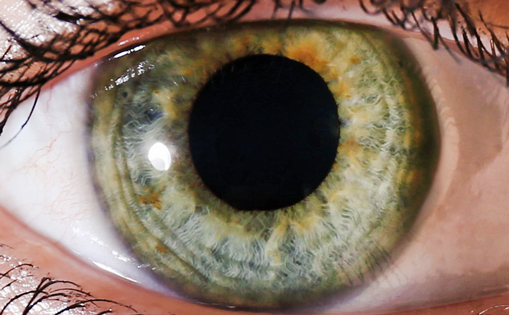Surgery requires the utmost attention to detail and is never ‘easy’. However, easyPhaco®, a new device for cataract surgery, eliminates the need for the surgeon to constantly check the special features of standard phaco equipment. Problems that occur when using such equipment include instabilities, collapse, repulsion of fragments, turbulence and insufficient emulsification performance. There is a need for surgical techniques that are fast and that overcome the limitations of the devices in current use. easyPhaco is one such technique: not only is it efficient, but it is also safe and – based on the author’s experience – provides the best results. It uses a totally new approach rather than applying slight refinements to the existing technique, such as lateral oscillation or software aids, and re-visits the foundations of the physics relevant to phaco-emulsification.
Requirements of ‘Ideal’ Cataract Surgery
For the eye to remain stable, an infusion capacity far above the outflow (aspiration and leakage) is required. A constantly strong inflow of the infusion directly to the tip (followability) is necessary in the non-occluded state to avoid disturbance. High vacuum strength is needed to create a high holding force (holdability). Finally, an efficient ultrasound effect is only achieved by good power coupling. This requires a paradigm shift: powerful fluidics with very high vacuum strength and a high flow rate to support operative manoeuvres, and well-directed axial power output into the firmly held fragment. easyPhaco encompasses all of the above: it is not simply a new surgical technique, but a highly elaborate technological achievement.
The Principles Involved
The principles behind easyPhaco can best be understood by comparing the sectional representations of the original phaco-emulsification concept and the easyPhaco concept (see Figure 1), as there are striking differences between the two. easyPhaco uses a capillary suction channel whose open cross-section is half the size of that used in the standard equipment. According to the law of Hagen and Poiseuille, this means that the outflow resistance is further increased. The result is a highly efficient collapse brake.
The capillary cross-section makes it possible to reduce the diameter of the outer shaft. However, the infusion sleeve and thus the width of the incision remain unchanged, which enlarges the cross-sectional area for the inflow by about 25% (see Figure 1B). Simultaneously, according to the laws of physics,1 the flow resistance for the infusion drops further. The result is a powerful strengthening of the infusion flow.
The combination of these two factors means that the inflow is much higher than the outflow. The chamber is constantly stable, even though the flow of the peristaltic pump and vacuum is set to unfamiliarly high values. This again results in well-directed flushing of the fragments, an unusually strong followability and high holdability power after achieving occlusion. The holdability for an occluded fragment increases proportionally to the applied vacuum and open cross-section of the tip. This is why easyPhaco technology uses a wider head cross-section with a larger opening area. With thin tips (coaxial micro-incision cataract surgery [COMICS]), the area can be further enlarged by a stronger bevelling (angle), as shown in Figure 1. However, the use of a high vacuum strength remains the critical factor: it is indispensable for holding and aspirating. The collapse brake of the capillary aspiration channel works automatically, without delay, as it is not subject to software control but to the laws of physics (see Figure 2).
The significantly enlarged head has further essential functions. The ultrasound energy (power coupling) delivered is squared by enlarging the metallic front area (see Figure 1A), regardless of whether tapering is carried out in one or several steps. In contrast to previous concepts, easyPhaco has multiple emulsification effects. Here, high vacuum and retention power help: once occlusion is achieved, a short ultrasound application is sufficient. All of the energy goes into the aspirated fragment axially and reduces it to pieces so small that they can easily be sucked up. Protruding over the inner diameter of the infusion sleeve, the head is designed to control the infusion flow. It guides the flow in such a way that the tip is surrounded by a turbulence-free flow funnel that directly flushes the fragments towards it. The sequence of illustrations in Figure 3 depicts the above-mentioned process in an easily comprehensible way. The author, having worked with easyPhaco for two years, has found this development to be quantum leap. The striking difference can be felt immediately with the first operation and one never again wants to lose the added value of safety and efficiency. Of course, a paradigm shift leads to a number of questions and concerns, which will now be discussed.
Questions and Concerns Can High Fluidic Values Really Be Applied Safely?
Yes. Table 1 gives an overview of the maximum values that can be used with each size of easyTip®. The 2.2mm easyTip is more accommodating than the 1.6mm easyTip used in COMICS. Compared with the values for standard equipment, easyPhaco’s stability is in a class of its own. The values for the 2.8mm easyTip have been provided by surgeons in India (Drs Sharma and Karma, personal correspondence). The measurement values in Figure 4 also give an idea of the chamber stability of a 2.2mm easyTip compared with a standard 19G tip.
Does easyPhaco Also Work with Hard Nuclei?
Yes. So far, the author, working in Europe, has never encountered a limit with cataracts. In addition, colleagues from India report extraordinary things: with easyTip 2.2mm, nuclei ≥4º are no problem, and with easyTip 2.8mm there do not seem to be any limits at all; there are no blockages, either. This may come as a surprise, but the reasons behind it are obvious: easyTip has optimum ultrasound performance and works with a very high vacuum strength. This is what is innovative about easyPhaco.
This Means Dangerous Ultrasound Energy. Which Power Settings Does One Apply?
It is amazing how little is scientifically known about the effects of ultrasound energy. Reducing hard lenses to small pieces requires the use of energy in one way or another. The minimum possible amount of energy should be used. easyPhaco ultrasound energy always works in the interior of the eye. The author uses 80% maximum amplitude, pulsed with 40Hz, controlled linearly. The critical factor is to only use ultrasound once occlusion has been achieved. With easyPhaco, retention power is particularly high thanks to the high vacuum strength and high suction area. The ultrasound energy is coupled in an optimum manner and therefore goes directly and axially to the fragment that has to be reduced; in fact, it only goes where it is needed. This is confirmed post-operatively by wonderfully clear corneas.
The Bevelling Chosen to Increase Retention Power Looks a Little Dangerous
With the easyTip COMICS one can adjust the manipulations oneself. For ‘divide and conquer’, the opening has to be turned slightly to the side. The bevelling then has the effect of a broad spatula. When removing quadrants there is better visibility from this side position. With the ‘chopping’ technique, drilling into the nucleus is speedy and safe with a larger bevel. However, the chopper should not be held parallel to the tip axes – it should be moved vertically to the bevel plane. With easyTip 2.2mm, the bevel only deviates a little from the norm. With easyTip 2.8mm, the bevel is markedly flat. This means there is only a small need for adjustment with COMICS. This is worthwhile as it is the only really fast and safe sub-2mm technique.
High Flow Rates Mean Turbulence – Does This Not Have a Damaging Effect on the Cornea Endothelium and Increase Balanced Salt Solution Consumption?
This is simply not true. With high flow rates and the geometry of the easyTip/Sleeve combination, it seems that a flow cone restricted to the area of the tip is created. This attracts and firmly holds the particles. Immediately after first testing this device, my Italian colleague Giovanni Prosdocimo at the Ospadale Conegliano said: “The easyTip has been optimised for chamber stability, followability and retention power. These latter factors are essential for the efficiency of cataract surgery. They are also decisive for safety and for making sure there are no lens fragments swirling around in the interior chamber, which the surgeon has to collect again.” The author can confirm that fluidics are a real benefit to the surgeon. It also seems that the streaming does not reach the cornea cavity at all and only goes forward. Surgery time becomes shorter and therefore balanced salt solution (BSS) consumption is not increased. The desired result is a very clear cornea after each operation, and that is what easyPhaco provides.
What About Phaco Burns?
Phaco burns occur only when tilting occurs during the incision and following long phaco performance under occlusion. To date, there have been no burns when using easyPhaco. The easyTip has a significantly stronger cooling coat than all other techniques; this, together with the high flow rates, explains the reduced risk.
Is easyPhaco Also Suitable for Premium Intraocular Surgery and Micro-incision Cataract Surgery?
Yes, easyPhaco is suitable. It is available in the three usual nominal incision widths: 2.8, 2.2 and 1.6mm. This is sufficient for multifocal implants and implants correcting astigmatism of all kinds. The author uses the sub-2mm incision easyTip COMICS, which is of great benefit for combined cataract/retina surgery. Due to the small incision and gentle technique, the eye remains particularly stable and clear sighted. This is of great importance when peeling and indenting in the eye.
How Experienced Does One Have to Be to Try easyPhaco and What Are the Risks?
easyPhaco is easy and safe. It is ideal for training and for people switching techniques. Particles do not have to be removed, allowing full attention to be given to the middle of the eye. It has sufficient performance for hard nuclei. The chamber remains stable. Anyone who has worked with easyPhaco will no longer want to use anything else.







